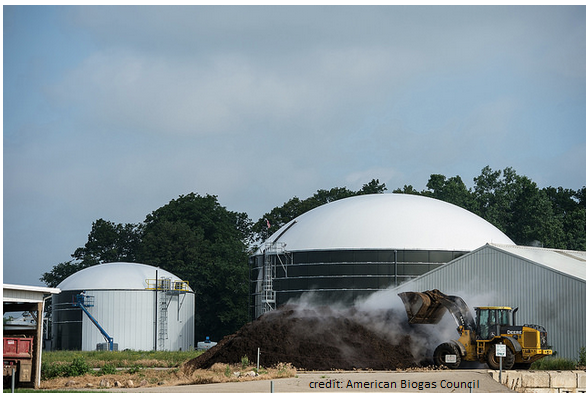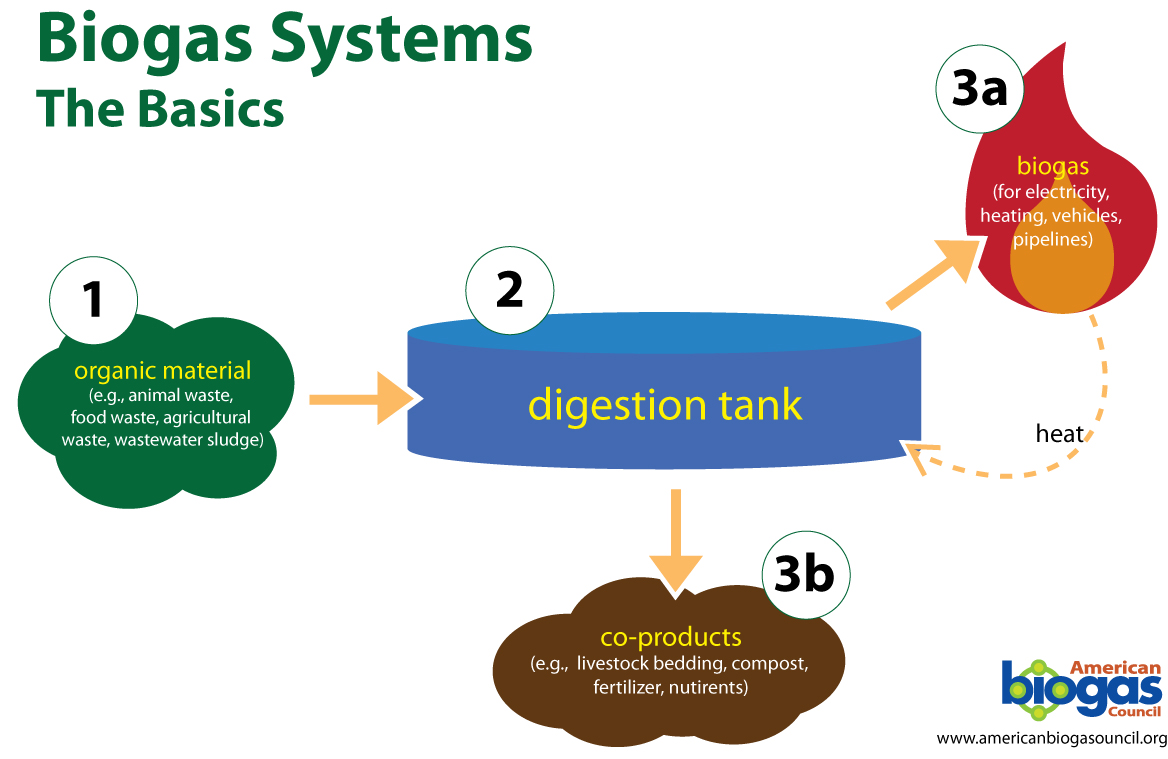Following the Environmental Protection Agency’s (EPA) recent decision to emphasize the use of biogas in the Renewable Fuels Standard (RFS), the United States Department of Agriculture (USDA) has come out with their own Biogas Opportunities Roadmap to promote biogas as a valuable form of renewable energy. The USDA is working together with the EPA, the Department of Energy (DOE) and industry leaders under the guidance of the White House to reduce methane emissions and expand the biogas industry.
Biogas is primarily composed of methane which is both a potent greenhouse gas (GHG) and a rich fuel. Capturing naturally occurring methane reduces greenhouse emissions and converts it into fossil fuel alternatives. Biogas is a proven renewable energy source and should be an integral component of America’s energy strategy. The biogas strategy is a win-win scenario where harmful pollutants are converted into valuable commodities.
Biogas is produced by the bacterial decomposition of organic materials in the absence of oxygen. Depending on the source of the organic matter, biogas contains 50-70% methane, 30-40% carbon dioxide and trace amounts of other components such as hydrogen sulfide, hydrogen, nitrogen and siloxanes.
Livestock waste, wastewater treatment plants, and landfills are all significant producers of methane GHG emissions. By implementing anaerobic digesters, the methane from livestock waste and wastewater treatment can be captured and contained. Increasingly, food waste is being added to digesters as well. On landfills, perforated pipes are installed within the landfill to trap and direct the gas rather than allow it to vent on its own.
Landfill gas is the most mature sector as many states already have rules in place limiting methane emissions from landfills and while some landfills merely flare their gas, many have been making electricity or vehicle fuel for years. Some wastewater treatment plants use biogas to power their own facilities. While there is much room for growth in these sectors, the greatest growth opportunities lie on livestock farms where only a small percentage currently use digesters.
Manure from livestock is a source of noxious odors in addition to methane emissions. The use of digesters kills pathogens and odors in the manure and enables farmers to produce high quality fertilizers from the effluent. The biogas can be used as fuel for heat or electrical generators.
There is great biogas potential in the United States. 36% of anthropogenic methane emissions come from the agricultural sector, equivalent to more than 200 million tons of CO2. Landfills account for another 100 million tons of CO2 equivalent pollution. Over 100 billion tons of food are wasted at the retail level every year and food production facilities produce large quantities of organic byproducts and waste streams.
In the Roadmap it is estimated that the current 2000 biogas production sites could be expanded to over 13,000 sites. If this potential were to be achieved 654 billion cubic feet of biogas would be produced annually equivalent to 41.2 billion kWh of electricity or 2,500 million gasoline gallon equivalents of liquid fuel. Building these 11,000 biogas sites would result in $33 billion in capital deployment, 275,000 temporary construction jobs and 18,000 permanent jobs.
Biogas and its co-products offer multiple potential uses. Biogas is easily used onsite for heat and thermal applications. Biogas can be combusted in simple generators to produce electricity and combined heat and power. Biogas can replace fossil fuels in many industrial applications.
Biogas can be upgraded to pipeline quality renewable natural gas (biomethane) and injected into natural gas pipelines where it is indistinguishable from fossil natural gas. Biomethane can also be upgraded into compressed or liquefied natural gas (CNG/LNG) for use as a vehicle fuel. The EPA recently clarified the use of biogas as an advanced biofuel eligible for credits under the Renewable Fuel Standard. It is also feasible to upgrade biogas to pure methane for use in fuel cells.
Biogas co-products are produced from the solid and liquid effluent in the digesters. The effluent makes a high quality fertilizer with certain benefits over compost because the digestion process kills pathogens that may be present in the feedstock. Liquid effluent fertilizer is desirable as it is readily spread on fields.
The USDA identified major barriers inhibiting the growth of the biogas industry. There is a significant lack of awareness of the value of biogas, renewable natural gas is rarely included in discussions of renewable energy. The biogas market is unpredictable due to inconsistent state and federal policy and fragmented regulations. The market for the output products from digesters is not mature and there are no standard classifications for solid and liquid residuals to encourage consumer confidence in the products. It is currently difficult for small producers to interconnect to either gas or electric grids and receive prices that cover their capital costs, markets for greenhouse gas reductions would help alleviate this problem. There is also a lack of consolidated performance data to facilitate economic analysis and underwriting.
A series of programs at USDA, DOE and EPA are all intended to promote biogas and reduce methane emissions. Grant and loan programs, technical and financial assistance, and new technology research are all being rolled out. Biogas as a transportation fuel is being emphasized through the RFS and DOE research. DOE is also expanding research quantifying the impact biogas can have in electrical power generation and when integrated with wind and solar for distributed power.
To help overcome barriers to integrating biogas into electricity and natural gas markets there will be reviews of interconnect standards and fee structures, pipeline injection standards, fair market access, net-metering and incentives for renewable energy generation. Markets for non-energy products such as nutrients, fertilizer, fibers and chemicals will also be reviewed. There is a proposal to create NAICS codes for biogas systems that would enable the collection of industry financial and technical data.
A viable biogas industry in the USA can provide economic benefits and provide a reliable, distributed source of renewable energy while reducing greenhouse gas emissions. While most biogas systems are currently used to manage wastes, these operations can be expanded to profitably provide energy sales and co-products such as fertilizers. Expanding the roughly 2000 existing sites to over 13,000 will provide many jobs that improve waste management and improve air and water quality. To achieve this goal support from federal agencies coupled with private sector investment and increased research and development are needed to expand the markets for biogas and its co-products.

